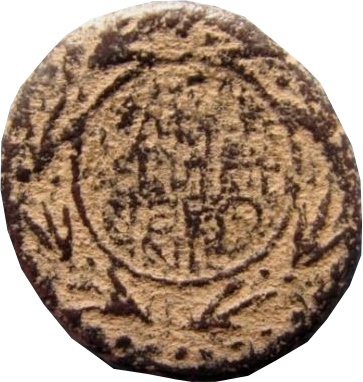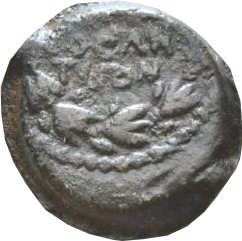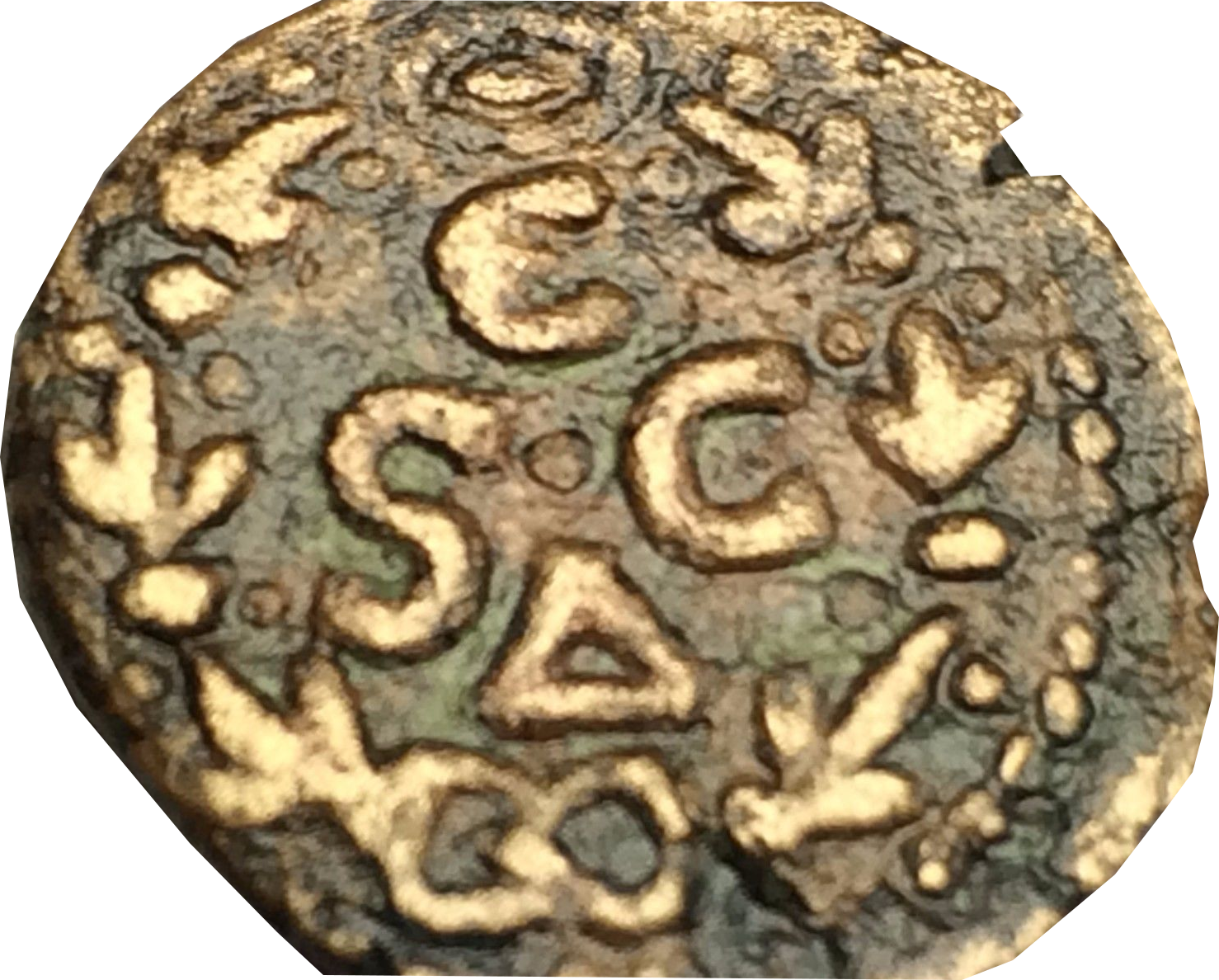Ancient Psychedelia: Alien Gods & Mushroom Goddesses
Online Book - Chapter 11, Page 220
Back to Online Book Mainpage / Next Page (Chapter 11, Page 221)
  R: (51h) Judea (Palestine) Antigonus Mattathias c. 40-37 BC  (52a) Rome, Emperor Claudius c. 51-54 AD Dioscuri Castor and Pollux Sexual inferences abound in mushroom lore and it’s never the reverse. Mushrooms do not abound in phallic lore. There is no phallic lore, for that matter. The idea of the mushroom though as being “phallic” does lead to many inventions of allegory. The stem of the mushroom can be seen to be the phallic (male) aspect as the cap is to the vulva, or female (receptive) aspect of the mushroom. In this sense the concept of the mushroom as “bolt” is pertinent. In this sense the hermaphrodite is also prevalent. A mushroom having both sexes in it and needing no partner to reproduce is said to be hermaphroditic. This is also where the idea of the Gemini “twins” comes from. In alchemical iconography, the twins are envisioned as being two sexes in one being. However, this same iconography can lead to images of two mushrooms next to each other. Mushrooms usually grow in pairs or in clumps with several of them bound together. This scene brings to mind the “family” of the “twins” or the “triplets,” “quadruplets” and “quintuplets.” (255) The Dioscuri are figures from Greek and Roman myth represented as Castor and Pollux. One was mortal and the other immortal. The twins Castor and Pollux were both said to be birthed by Leda, but Castor was the mortal son of Tyndareus, the king of Sparta, while Pollux was the divine son of Zeus, who seduced Leda in the form of a swan. Accounts vary between one or two eggs and also twin sisters Helen of Troy and Clytemnestra being potentially born at the same time. In Latin these twins are the Gemini. In the Homeric Hymns we read: “Sing, clear-voiced Muse, of Castor and Polydeuces, the Tyndaridae, who sprang from Olympian Zeus. Beneath the heights of Taygetus stately Leda bare them, when the dark-clouded Son of Kronos had privily bent her to his will.” (256) |
From another Hymn we read: “children who are delivers of men on earth and of swift-going ships when stormy gales rage over the ruthless sea. Then the shipmen call upon the sons of great Zeus with vows of white lambs, going to the forepart of the prow; but the strong wind and the waves of the sea lay the ship under water, until suddenly these two are seen darting through the air on tawny wings.” (257) From a Cyprian Fragment of Stasinus we read: “Kastor (Castor) and Polydeukous (Polydeuces), while stealing the cattle of Idas and Lynkeus (Lynceus), were caught in the act, and Kastor was killed by Idas, and Lynkeus and Idas by Polydeukes. Zeus gave them immortality every other day.” (258) I would like to know what is going on with all this cattle theft? There seems to be quite a bit of it in the ancient world. Before they were “stars,” the Dioscuri were poised on “snow white” steeds with “spears with flashing points,” both symbols for the mushroom. The spear is the same as the arrow, it’s a pointed rod with a bowed back cap. The Dioscuri were similar to Eros, the archer. From Ovid’s Metamorphosis, we read: “Now [in the hunt for the Calydonian Boar] the Gemini (the Twins) [Dioskouroi (Dioscuri)], not stars of heaven as yet, came cantering up, both brothers striking, both on snow-white steeds; and both poised quivering spears with flashing points.” (259) And Alcaeus, a Greek poet, writes: “Come hither, leaving the island of Pelops [the Peloponnese], strong sons of Zeus and Leda; appear with kindly heart, Kastor (Castor) and Polydeukes (Polydeuces), who go on swift horses over the broad earth and all the sea, and easily rescue men from chilling death, leaping on the peaks of their well-benched ships, brilliant from afar as you run up the fore-stays, bringing light to the black ship in the night of trouble.” (260) Who exactly are the twins Castor and Pollux? If they were born from an egg, they are twins, we see them coming out of what appear to be twin mushrooms on some ancient coins from Rome 22 AD, where they have a caduceus between them (52i). Their heads come out of the horns, just like the fruits from the cornucopia (52j), and they dart through the air and save men at sea, who soar like swift horses with quivering spears and flashing points. (More on this in the final chapters.) (255) Sacred Mushroom, Allegro, p. 108 (256) Homeric Hymn XVII to the Dioscuri (257) Homeric Hymn XXXIII to the Dioscuri (258) Stasinus of Cyprus or Hegesias of Aegina, Cypria Fragment 1 (from Proclus, Chrestomathy i) (trans. Evelyn-White) Greek epic C7th or 6th BC (259) Ovid, Metamorphoses 8. 370 ff (trans. Melville) Roman epic C1st B.C. to C1st AD (260) Alcaeus, Fragment 34 (trans. Campbell, Vol. Greek Lyric I (Greek lyric C6th BC) |
Go Back to Page 219